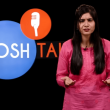Telemetry enables data sourcing from remote points and transmits it to the equipment that measures and displays vital signs like an electrocardiogram. Patients who are admitted for serious life-threatening conditions need continuous monitoring till they stabilize and are on a life-support machine that supplies oxygen.
Other necessary minerals and medicines are injected through IV fluids till the patient stabilizes. Telemetry monitors biometric and vital data points of the patient like blood pressure, body temperature, blood oxygen levels, motor activity, blood sugar, and ECG.

A wireless telemetry
Remote patient monitoring or an RPM system is a wireless wearable device that will read the data detected by telemetry devices albeit from distance. A patient who is located anywhere will be using an RPM device usually recommended by the healthcare provider. They may use it like a stick-on patch, a wearable strap, or a watch. Connected through Bluetooth, the data related to the specific RPM devices is recorded and stored in a cloud format.
ADVERTISEMENT
The associated telehealth nurse or physician can check the data and establish a need for intervention if the case requires it. Just like traditional telemetry devices alert the nurse-in charge, the data stored in RPM alert the nurse or clinician monitoring a patient pool assigned under their care.
A surge in the use of RPM
During a pandemic monitoring, regular patients who were not affected by the virus would have been a utopian task without the use of telehealth services and RPMs. The rise in infected patients created a shortage of staffed beds in hospitals.
Added to the pressure is the mandatory requirement to maintain distance and stay indoors during a lockdown. Before 2020, RPM devices existed but were not so popular. However, now enablers and patients agree to use RPM devices for a multitude of benefits.
ADVERTISEMENT
Benefits of RPM devices
- RPM devices are easy to use and can be used by even stable seniors and other ambulatory patients
- The captured data is transmitted on a real-time basis and alerts the concerned nurse or healthcare personnel if there is a variance in the body vitals readings
- Early detection and timely intervention are enabled with RPMs
- Patients who use RPMs understand how to use them and start taking precautions to manage their lifestyle
- Through patient engagement, effective communication, and RPMs, hospital-at-home programs are gaining traction
- All the above steps lead to cost-saving. For instance, when high troponin with myocardial infarctions is detected in a patient, the physician can communicate to a family member to administer the right medication to stabilize them. When episodes of hospitalization are avoided money is saved for all the stakeholders of the healthcare system.
Are RPMs approved in health plans?
With the onset of patient-driven grouping models for reimbursement, it is understandable the CMS is looking to avoid overbilling by home health agencies without compromising on the quality of the care. Using telehealth and RPMs can only bring healthcare costs down. Hence RPMs are approved and reimbursed but only if the CPT code is mentioned right and other rules related to the number of times it can be claimed in 30 days are adhered to by the healthcare provider.
Without the right CPT code, the uniformity of the claim is diluted leading to rejections or reclaims. So instead of rejecting the idea of RPM, a program using these devices should teach the staff to use the right codes and are coherent with ICD-10 codes that substantiate the use of the device in a treatment plan.
Types of RPM devices
Body vital measurement is requisite and RPM devices are suggested to enrolled patients as per their medical conditions and the focus area of their ailment. Here are a few RPM devices that are commonly used:
ADVERTISEMENT
- Blood Pressure
A blood pressure device will use the sensor to capture the pulse and heartbeat movements. The healthcare practitioner can remotely assess the data collected through blood pressure monitors. This device helps them assess abnormal heath beats that can cause arrhythmias or astral fibrillation. A misleading blood pressure reading like white-coat hypertension can also be detected well in advance
- Blood Sugar
Blood sugar RPM devices can monitor a patient’s data without drawing blood and the practitioner is alerted in advance to take necessary action.
Conclusion:
Taking measures to aid cost-effective solutions to deliver affordable and safe care can be plausible for a large patient pool through the use of RPM systems.








